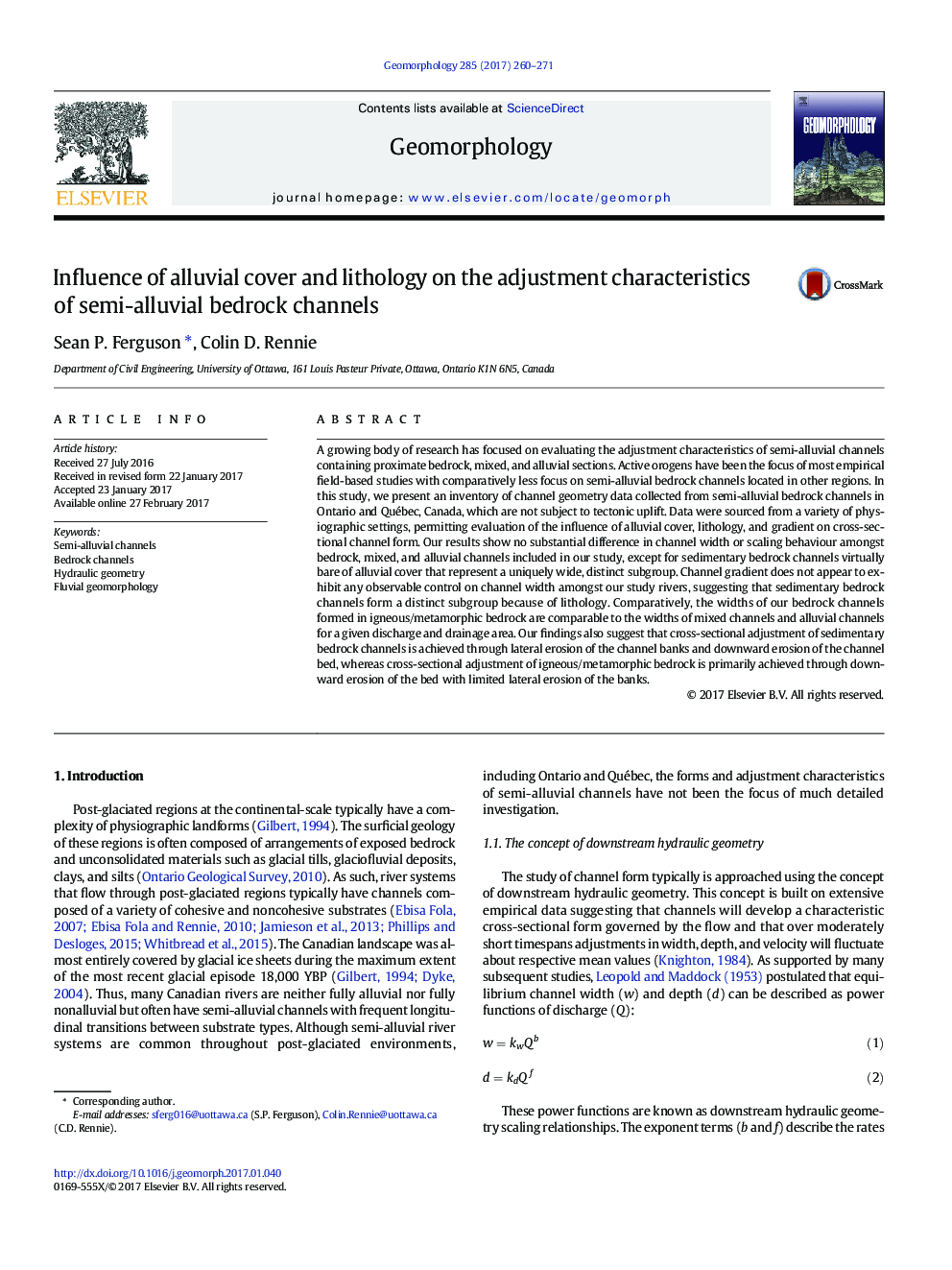| Article ID | Journal | Published Year | Pages | File Type |
|---|---|---|---|---|
| 5781045 | Geomorphology | 2017 | 12 Pages |
Abstract
A growing body of research has focused on evaluating the adjustment characteristics of semi-alluvial channels containing proximate bedrock, mixed, and alluvial sections. Active orogens have been the focus of most empirical field-based studies with comparatively less focus on semi-alluvial bedrock channels located in other regions. In this study, we present an inventory of channel geometry data collected from semi-alluvial bedrock channels in Ontario and Québec, Canada, which are not subject to tectonic uplift. Data were sourced from a variety of physiographic settings, permitting evaluation of the influence of alluvial cover, lithology, and gradient on cross-sectional channel form. Our results show no substantial difference in channel width or scaling behaviour amongst bedrock, mixed, and alluvial channels included in our study, except for sedimentary bedrock channels virtually bare of alluvial cover that represent a uniquely wide, distinct subgroup. Channel gradient does not appear to exhibit any observable control on channel width amongst our study rivers, suggesting that sedimentary bedrock channels form a distinct subgroup because of lithology. Comparatively, the widths of our bedrock channels formed in igneous/metamorphic bedrock are comparable to the widths of mixed channels and alluvial channels for a given discharge and drainage area. Our findings also suggest that cross-sectional adjustment of sedimentary bedrock channels is achieved through lateral erosion of the channel banks and downward erosion of the channel bed, whereas cross-sectional adjustment of igneous/metamorphic bedrock is primarily achieved through downward erosion of the bed with limited lateral erosion of the banks.
Related Topics
Physical Sciences and Engineering
Earth and Planetary Sciences
Earth-Surface Processes
Authors
Sean P. Ferguson, Colin D. Rennie,
